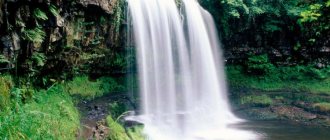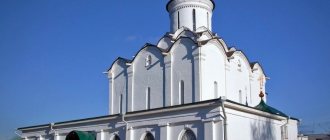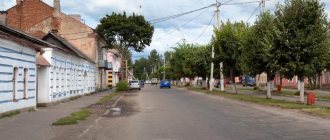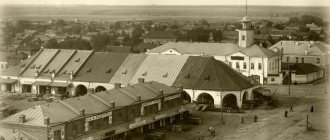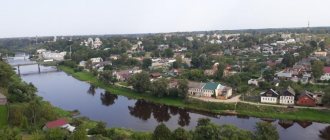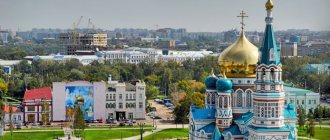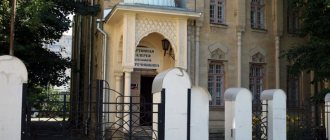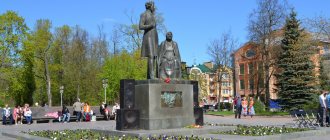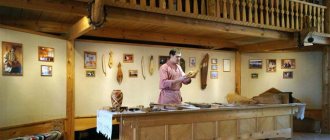The Novgorod region is a territory known since ancient times with beautiful natural places and stunning monuments of religious architecture. The history of this land goes back many centuries. From here the Rurik family began its march across Rus', and Novgorod the Great was founded here.
The independence of the ancient lands of the Novgorod region lasted until 1570, when Ivan the Terrible conquered Novgorod and the lands belonging to him and annexed them to the Moscow Principality.
Iversky Valdai Monastery
The real Orthodox pearl of the Novgorod region is the Iversky Svyatoozersky Borogoditsky Valdai Monastery, founded by Patriarch Nikon in 1654 in a stunningly beautiful place - one of the islands of Lake Valdai. The Great Patriarch was attracted not only by the beauty of these places, but also by numerous tales and legends about the miracles that happened here. According to Nikon's plan, the Valdai Monastery was to become the center of spiritual enlightenment in Rus' and was built in the image of the Iveron Monastery on Mount Athos.
The Iversky Monastery quickly became rich and influential; it owned several surrounding villages, but from the beginning of the 18th century. the affairs of the monastery fell into disrepair. After the revolution, the monastery was transformed in 1919 into the Iverskaya labor artel with 200 hectares of gardens, vegetable gardens and other lands. In 1927, the artel was abolished and the monastic community was liquidated. The monastery buildings housed museums, workshops, a forest school for children with tuberculosis, a recreation center, etc.
In 1991, the monastery was returned to the church, and the restoration of this holy place began; to date, it has been completely restored. The most famous beautiful buildings of the monastery are the Church of St. Philip of Moscow (1653), the Assumption Iveron Cathedral (1656)
Konchanskoye-Suvorovskoye
Where will we go next? Surely you have heard the name Borovichi. But are you familiar with the village of Konchanskoye-Suvorovskoye? But this is the museum-reserve of A.V. Suvorov, 35 kilometers from Borovichi.
As the commander himself said: “Life is short, but science is long.” So that your life does not pass in vain, so as not to regret what you missed, travel more, get to know other cities, discover Russian history and culture. After all, our country is rich in amazing places. Suvorov himself understood this very well and was proud of the fact that he was Russian.
Much has been written about his life. But of the Suvorovs’ possessions, only this has survived. That's why it's valuable. Alexander Vasilyevich received the Konchanskoye estate from his father, and before the revolution, the Suvorov family owned these lands. Despite all his merits, it was here that the great commander Paul I was exiled. But he did not lose his strength of spirit and faith, and continued to take care of Russia. Remember Surikov’s famous painting “Suvorov’s Crossing of the Alps”? The great commander-in-chief began this famous Italian-Swiss campaign from here.
Photo: kladez-zolota.livejournal.com
Now Konchanskoye-Suvorovskoye is a unique museum. Here the summer house and the stone church of St. Alexander Nevsky have been restored, outbuildings have been recreated, where they maximally convey the life and way of life of the 18th-19th centuries, and the wooden church has been completely reconstructed. A visit to the estate is a chance to look into the past and get to know the amazing personality of the commander.
By the way, if you like to read, re-read his letters, he was a wise man who completely loved Russia.
Lake Velje
One of the most beautiful places in the Novgorod region is the lake of glacial origin Velye. It is located among centuries-old forests, the same age as The Tale of Bygone Years, on the territory of the Valdai National Park. This is one of the largest and most beautiful lakes in Russia - its length from north to south is about 25 km.
The lake is framed by high hilly shores, indented by sandy bays of various sizes, and about 200 picturesque islands of various sizes and origins are scattered on its water surface.
Nikolo-Vyazhishchi Monastery
Another famous and beautiful place in the Novgorod region is the Nikolo-Vyazhishchi Monastery (XIV century), located in the village of Vyazhishchi. This is an amazingly beautiful architectural religious ensemble, built on the river of the same name. The elegance and integrity of the image of the monastery, abundantly decorated with colored tiles - the rightful pride of the inhabitants, harmoniously fits into the surrounding virgin and beautiful landscapes.
To date, of all the buildings of the monastery, only the refectory with the churches of the Ascension and St. John the Evangelist (1694-1698), St. Nicholas Cathedral (1681-1683) and one residential building of strict architecture have been preserved.
Beautiful tiles, which have become popular elements of the exterior decoration of buildings in the Novgorod region since the 16th century, give the buildings of this holy place a special charm. It is not known for certain where the tiles for the Vyazhishchi Monastery were made; according to researchers of its history, they were specially brought from Moscow.
Church of the Transfiguration on Kovalevo
The Church of the Transfiguration on Kovalevo is the only one on our list that was built, in modern terms, with private investment. A wealthy noble family of the Zhabins lived near Veliky Novgorod, and in 1345 its representative, boyar Ontsifor, wanted to build a special church. Its walls were painted with frescoes, which today are of enormous historical value. During the Great Patriotic War, the temple was destroyed, but by now it has been restored with maximum precision.
Where and when:
The Church of the Transfiguration on Kovalevo is located 6 km from the center of Veliky Novgorod.
The temple can be visited with a restriction: 10 people per day are allowed into the territory of the monument. Opening hours: from 11.00 to 17.00 on all days except Thursday and Friday. Entrance - 50 rubles. Coordinates
.
7. Church of the Assumption on Volotovo Field
Built in 1352 by order of Archbishop Moses, the Church of the Assumption on Volotovo Pole is an excellent example of early stone architecture on Novgorod land. The temple is also famous for its unique 14th-century frescoes telling about world history and God's scripture. However, the war again made its adjustments, and 350 m² of frescoes fell into pieces while the church was on the front line for 29 months and was subject to shelling. To date, most of the Russian architectural heritage has been restored, but work is still underway. The restored frescoes are placed in the reconstructed church.
Where and when:
The church is located in the village of Volotovo, 5 km from Veliky Novgorod.
The facility is open all week, except Thursday and Friday, from 11.00 to 14.00, entrance - 100 rubles. Coordinates
.
Tip: The distance between the Church of the Savior on Kovalevo and the Church of the Assumption on Volotovo Pole is 1.5 km, so we recommend combining viewing of the two attractions.
Rurik's Settlement
One of the most interesting places from a historical point of view in the Novgorod region is the archaeological monument of Rurikovo Settlement on the right bank of the river. Volkhov. Based on the results of the excavations, experts concluded that since Neolithic times there were ancient settlements here, approximately from the period of the retreat of glaciation in the 9th century. BC.
Archaeologists believe that it was in these beautiful places that Rurik was called to reign, giving rise to the first dynasty of Russian monarchs. According to some sources, the name Novgorod was given in relation to the old settlement, when the size of the latter’s growth was finally exhausted. The area of the hill near Rurik Settlement is indeed small; around it there are beautiful, but unsuitable for settlement, water meadows, and during floods the hill often becomes an island.
Historical places
German Memorial Cemetery
Coordinates: 57.716446, 31.972604 How to get there: by personal transport from the village of Korpovo 2 min.
More than 30 thousand soldiers are buried in the German cemetery in the village of Korpovo. Their remains are brought here from all over the region.
Mass death sites are carved on one of the stones. The cemetery was designed and built by the Germans, and order is maintained at their expense.
They say that the paths are cleared here, even when the entire village is waist-deep in snow.
Travel Palace of Alexander I
Address: Korostyn village, st. Ozernaya How to get there: bus or car, 1 hour from Veliky Novgorod Opening hours: under restoration
The palace is a two-story mansion decorated with columns. It was built by the architect Vasily Stasov for Alexander I on the shore of Lake Ilmen.
An orchard with trees from the times of Catherine II has been preserved here.
At the moment, the estate is under restoration, which will last until the end of 2021. After which it will house a clay toy museum dedicated to the Ilmen Glint. This is a 15-meter cliff on the shore of the lake, which is a protected natural monument.
Vitoslavlitsy
Coordinates: 58° 31′ 32.0513″, 31° 16′ 27.0941″ Phone: 8(1627) 9-21-50 Website: novgorodmuseum.ru Opening hours: May-August 10:00-20:00, October - March 10:00-16:00, September and April 10:00-18:00 Cost: children under 16 years old - free, students - 120 rubles, adults - 170 rubles; group excursions from 640 rub. How to get there: bus, personal transport; from Veliky Novgorod 1.5 hours and 20 minutes.
The first exhibit of the museum of wooden architecture was the Church of the Assumption of the Virgin Mary (1595). She was transported here from the village. Kuritsko in 1964.
Today, huts, chapels and churches form real streets. There is even a stable and a goat shed. Here they show how animals are cared for, from cleaning and milking to shoeing.
Inside the exhibits there are exhibitions with interactive elements. Visitors can here:
- visit one of 6 exhibitions introducing peasant life;
- watch the craftsmen at work;
- take part in games and celebrations;
- take a master class on felting wool products.
House-Museum of Nekrasov in Chudovo
Address: Chudovo, st. Kosinova, 1 Phone: 8(1665) 5-42-67 Website: novgorodmuseum.ru Opening hours: Tue-Sun 10:00-17:00 Cost: children under 16 years old - free, students - 60 rubles, adults - 120 rub., excursions from 320 rub.
Nikolai Alekseevich came to Chudovo to take a break from the worries of the city, to hunt, and to communicate with people. It was here that the poet met his last love and wife.
Here the “Monster Cycle” of 11 works was born, work began on “Contemporaries” and the 4th chapter of the poem “Who Lives Well in Rus'” was written.
At one time, many of the poet’s friends visited the estate: G. I. Uspensky, M. E. Saltykov-Shchedrin, N. K. Mikhailovsky, A. N. Pleshcheev.
The first exhibition was opened in 1971. Today here you can see interiors from Nekrasov’s times and personal belongings of the poet’s family.
House-Museum of G. I. Uspensky
Address: Syabrenitsy village, st. Radishcheva, 73 Phone: 8 (1665) 4-16-94 Website: novgorodmuseum.ru Opening hours: Mon-Sun 10:00-18:00, Tue, Wed - weekends Cost: children under 16 years old - free, students - 60 RUB, adults - 120 RUB, excursion from 320 RUB. How to get there: bus or personal transport, 10 minutes from Chudovo.
The writer lived with his family in the village of Seryabrenitsy for a year. Later, it was here that the only museum in Russia was opened in his honor. The following works were written in this house:
- "Power of the Earth";
- "Quarter Horse";
- “Petka’s career”;
- "Live numbers".
Museum-Reserve of A.V. Suvorov
Address: s. Konchansko-Suvorovskoye, st. Central, 19 Phone: 8(1664) 9-85-33 Website: novgorodmuseum.ru Opening hours: Mon-Sun 10:00-16:00 (autumn-winter), 10:00-17:00 (spring-summer) ; Tue - closed Cost: children under 16 years old - free, students - 120 rubles, adults - 240 rubles, excursion from 320 rubles. How to get there: bus or car, 3 hours from Veliky Novgorod.
Of the Suvorov family's possessions, only the house in the village has been preserved in its original form. Konchanskoye, which was the place of exile of the commander at the end of the 18th century. The museum opened in 1942. During its existence:
- reconstructed a summer house on Mount Dubikha;
- We restored the Church of Alexander Nevsky and opened the diorama “Alpine Campaign of A.V. Suvorov” in it.
- outbuildings were restored.
Today the museum occupies an area of 4.5 hectares, among its exhibits are original things of the commander, furniture of that era; works of art that tell the story of exile.
Museum "Slavic Village of the 10th Century"
Address: Lyubytino village Telephone: 8(1668) 6-17-93 Website: lubturism.ru Opening hours: Tue-Sat 09:00-18:00 (April-September), 10:00-17:00 (October- March); Mon, Sun - weekends Cost: preschoolers - free, schoolchildren and students - 10 rubles, adults - 50 rubles. How to get there: by car or bus; 2.5 hours from Veliky Novgorod
Due to the peculiarities of the landscape, the area where the museum is located is called “Novgorod Switzerland” and “Pyramids of the North”. Lakes, waterfalls and mounds are what awaits tourists here.
The museum itself is stylized as a Slavic settlement of the 9th-10th centuries. The buildings on its territory are copies of structures of that time.
When working on the exhibits, only tools available to our ancestors were used. Anyone can learn to use them here.
A master class on clay modeling is also held for visitors.
Resurrection Cathedral
The Resurrection Cathedral is the main Orthodox shrine of the ancient city of Staraya Russa in the Novgorod region. It was built at the end of the 17th century. on the site of the wooden Church of the Intercession of the Virgin Mary, which in turn replaced the even more ancient Church of John the Baptist. Two chapels of the new cathedral were consecrated in the name of these churches that perished during the Time of Troubles.
In 1830, architect V.P. Stasov rebuilt the cathedral, changing its appearance beyond recognition, while preserving its beautiful and recognizable “Russian architecture”. It was one of the first religious buildings in the Russian style, which soon became fashionable in national architecture for a long time.
Churches, cathedrals and temples
Iversky Monastery
Address: Valdai, Ostrov Telephone: 8 (911) 6-14-66-94 Website: iveron.ru Opening hours: Mon-Sun 07:00-21:00 Cost: free; excursions: children - free, students - 30 rubles, adults - 50 rubles. How to get there: to Valdai - bus, car or railway transport; public transport does not go to the monastery. 20 minutes from the city.
In 1652, while Metropolitan Nikon was transporting the relics of St. Philip, Metropolitan of Moscow, from Novgorod to the capital, he received a blessing to establish a church in Valdai. A year later, 2 wooden churches were built on the shore of the lake. Metropolitan Nikon visited his brainchild and blessed the water of Valdai, lowering the cross and the Gospel to the bottom. Since then, the lake has been called Holy, and the monastery has a second name - Svyatozersky.
The main shrine of the monastery is the Iveron Mother of God icon, which was brought from Athos to Russia in 1648. Already along the way she showed miraculous power. When the monks were unable to pay the toll on the road and were thinking of returning to Athos, the Most Holy One appeared to them in a dream and said that they needed to continue the journey. That same night, a local merchant also dreamed of her, asking him to help the monks. So, the problem was solved.
Later, the icon saved parishioners from hunger and disease more than once. In 1848, it was carried around the city during a cholera epidemic, and the disease began to recede. In memory of this, an annual religious procession was established. In 1927, the icon disappeared. In 1954 they wrote a new one.
Nikolo-Vyazhishchi Convent
Address: Vyazhishi village Telephone: 8(1627) 4-20-47 Website: nvm.cerkov.ru Opening hours: 06:30-19:00 How to get there: car or bus; 30 minutes from Veliky Novgorod.
In the 14th century, three monks came to Vyazhishi and decided to found a monastery here. The land was taken illegally. Because of this, peasants sued them for several years. But the monastery recognized the truth.
The buildings here are decorated with tiles. They are used in the design of porches, walls, galleries, doors and chapter drums. But it is still unknown where the mosaics were made.
Main shrines:
- relics of St. Euthymius II;
- icons of Anthony the Roman of Novgorod and Blessed Matrona of Moscow;
- parts of the relics of St. Nicholas the Wonderworker.
Varlaamo-Khutyn Convent
Address: Khutyn village Phone: Website: novgorod-mon-84.cerkov.ru Opening hours: 06:30-20:00 How to get there: car or bus; 30 min. from Veliky Novgorod.
In the 12th century, Varlaam Khutynsky cast out demons with prayer from the “bad place” and founded a monastery on it, which until 1920 was for men.
However, it was closed, and the ministers were persecuted. The building housed a military school, and later a psychiatric hospital.
During the war years, the buildings were heavily damaged by bombing and remained empty until 1994. The nun's monastery was revived, and since then it has become a women's monastery.
The relics of Varlaam Khutynsky are kept on the territory of the monastery, and G. Derzhavin is also buried along with his wife.
Perynsky monastery
Coordinates: 58.472872, 31.273899 Address: Veliky Novgorod, Yuryevo village How to get there: car or bus; 20 minutes. from Veliky Novgorod, the nearest settlement is the village of Yurievo (9 km)
The monastery, named after the thunder god Perun, is today dedicated to the Nativity of the Virgin Mary. The temple appeared on the site of a pagan sanctuary after the baptism of Novgorod.
The building is small, but despite this, it has three entrances and seems very spacious.
Frescoes from the 13th century and pre-Mongol masonry have been preserved here. The facade of the building is monochromatic and has no decorative elements.
Church of the Tikhvin Icon of the Mother of God
Address: s. Egla Phone: 8(921)2-01-13-28 Website: egla.cerkov.ru How to get there: car or bus; 15 minutes. from Borovichi
According to legend, in the middle of the 14th century, the icon of the Tikhvin Mother of God sailed along the Msta River to the village of Egly. Then local residents built a wooden church in her honor, which burned down during the Swedish intervention. Later, a chapel appeared on this site, where Peter the Great stopped to pray, and later Catherine II.
The icon has demonstrated miraculous power more than once. According to local stories, a merchant’s barge crashed on the rapids on the river, and he himself was seriously injured. Later he heard about the appearance of the icon in Egla and went there with prayer. The Most Pure One healed him, and then the merchant donated funds for the construction of a stone temple. The rest of the amount was collected by residents of nearby villages. The new building was completed in 1874.
During the Bolshevik era, the church was used as a prisoner of war camp, and in the post-war period - as a warehouse. The revival of the church began in the 90s. It was consecrated in 2001.
Transfiguration Cathedral
One of the most ancient stone religious buildings on the territory of the modern Novgorod region is the Transfiguration Cathedral, erected in 1198 as part of the Transfiguration Monastery.
Currently, the beautiful architectural monument is used as a place to display the collection of the Staraya Russa Museum of Local Lore, which proves the significant development of Staraya Russa already in the 11th century. The cathedral also displays fragments of the most beautiful frescoes of the 15th-17th centuries, discovered during excavations in the Novgorod region.
Tourist map of the Novgorod region 1972
The scheme was drawn up, designed and prepared for printing by the Scientific and Editorial Map Compilation Unit of the GUGK in 1972. Editor V.S. Titkova. Text - Blokhina E.N. Art editor Filchagina N.A. Cover by artist L.I. Goltsova Photos by Bushkin A.G., Panov V.I. Technical editor - Veretilny S.I. Signed for publication on June 26, 1972. Paper format 107x82. Volume 1 p.l. Circulation 69000. Order No. 57. Printed by factory No. 5. Technical editor - Khvedchenya N.V.
Legend
Information from the map about the Novgorod region
The Novgorod region is located in the north-west of the Russian (East European) Plain, within the Priilmenskaya Lowland and the Valdai Upland.
The area of the region is 55.3 thousand square meters. km. The surface of the Russian Plain within the region has a gently undulating character. The lowest places are in the Ilmen Lowland (about 18 m above sea level), the highest are in the Valdai Upland (about 300 m).
There are many rivers and lakes in the region. The largest rivers in the region: Volkhov, Meta, Pola, Lovat, Shelon.
The Novgorod region can rightfully be called a lake region. There are about a thousand large and small lakes scattered throughout the territory. In the west of the region there is the largest lake - Ilmen. 50 rivers flow into the lake, and one river flows out - the Volkhov. The lake is home to 40 species of fish: smelt, bream, pike perch, pike, burbot, roach, etc. The second largest lake, Valdai, is located among beautiful hills. This is the deepest lake in the region (up to 60 m) and differs from all others in the purity and transparency of the water. Both lakes are navigable.
In the east of the region there are karst lakes: Gorodno, Yamnoye, Sukhoe, etc. Lake Seliger is partially located on the territory of the region. The picturesque shores of many lakes and rivers are wonderful places to relax.
The Novgorod region is located in a forest zone, which is divided into two subzones - taiga and mixed forests. In the eastern elevated part of the taiga subzone, spruce forests are better preserved. In the subzone of mixed forests, broad-leaved species are mixed with spruce - oak, linden, maple, elm, ash. Pine forests have been preserved in the central and eastern regions of the region. Large areas in the region, especially in the west, are occupied by small-leaved forests - birch, aspen, alder. In some places, small oak groves remain in the region. There are a lot of mushrooms, berries and medicinal plants in the Novgorod forests.
There are many swamps in the region. They are common in poorly drained areas in both subzones. There are a lot of cranberries, lingonberries, blueberries, blueberries, and cloudberries in the swamps. The region has floodplain (flood) and dry meadows.
The region is home to various animals: brown bears, lynxes, foxes, moose, stoats, hares, ferrets, squirrels, martens, etc. The fauna of ponds and swamps is diverse. Otter, mink, beaver and muskrat are common here, as well as waterfowl - ducks, geese, swans.
The nature of the region is rich and varied. Clean and deep lakes with beautiful shores, forests with diverse wildlife, high-water rivers - these are the unique landscapes of the Novgorod region.
It is necessary to preserve the beauty and wealth of our native land for future generations. It is the duty of tourists to strictly comply with the law on nature conservation, to identify and register rare species of animals and plants, and to describe the most interesting natural objects.
Slavs have lived in the region since ancient times. In the 9th century. Novgorod arose at the intersection of the most important trade routes, which already in the 10th century. was one of the largest economic and cultural centers in Eastern Europe. In the first half of the 12th century. Novgorod became the capital of the Novgorod feudal republic. In the 15th century Novgorod and all its lands became part of the centralized Russian state. In the XVI - XVII centuries. Novgorod retained its significance as a major commercial and industrial center. From the beginning of the 18th century. its development was determined by the proximity of St. Petersburg. The city became the center of a vast agricultural region, the products of which were used to satisfy the needs of the capital. Industry in the Novgorod region was poorly developed.”
During the years of Soviet power, mechanical engineering and metalworking, peat industry, production of refractory products, forestry, woodworking, pulp and chemical industries developed in the region.
The economy of the Novgorod region suffered greatly during the Great Patriotic War. Hundreds of enterprises were barbarically destroyed by the Nazis, but after the war they were restored in a short time.
The life and work of many remarkable people are connected with the Novgorod region: G. R. Derzhavin, N. A. Nekrasov, revolutionary democrat Gleb Uspensky. The composer Rachmaninov, the famous traveler N. N. Miklouho-Maclay, the composer A. S. Arensky and others were born on Novgorod land. N. A. Rimsky-Korsakov created the opera “Sadko” based on the Novgorod epics. A. N. Radishchev, A. S. Pushkin, M. Yu. Lermontov, K. F. Ryleev, F. M. Dostoevsky and others were here.
Heroes of the Soviet Union who performed unforgettable feats during the Great Patriotic War live and work here: sergeant V.F. Pavlov, pilot I.A. Kaberov, commissar of the partisan brigade I.I. Sergunin, etc.
On February 16, 1967, by Decree of the Presidium of the Supreme Soviet of the USSR, for the active participation of the region's workers in the partisan movement against the Nazi invaders, for the courage they showed during the Great Patriotic War, for the successes achieved in the development of the national economy, the Novgorod region was awarded the Order of Lenin.
Sights of the Novgorod region
ARKAZHA B-3. Church of the Annunciation 1179. The remains of wall paintings have been preserved.
BIG VISHERA B-4. Monument to the heroes of the first volunteer detachment who died during the Civil War.
BOR B-5. The Church of the Assumption is an architectural monument of the 18th century.
BORKI G-2. Regional agricultural station. Excursion agricultural facility. Mass grave.
BOROVICHI V-6. Second after Novgorod, the industrial and cultural center of the Novgorod region. An ancient center of handicrafts: knitting, leather and footwear, woodworking, pottery. Currently, Borovichi refractories are exported to dozens of countries around the world.
Near the city, in the village of Polynovka, the composer A.K. Lyadov (1855 -1914) lived and died. The city has a local history museum, a tour desk, a hotel, and a gas station.
In the surrounding area there are remains of two fortifications and many hills of the 7th-9th centuries.
BOROVNO G-5. From 1947 to 1952, the writer V.V. Bianchi (1894 - 1959) lived intermittently. Beautiful place.
OZ. BOROVO V-7. A karst lake periodically disappears into limestone cavities.
ARMOR V-3. In 1613, there was a fight against Swedish invaders here. The church is an architectural monument of the mid-18th century.
BUREGI G-3. The Church of St. Nicholas and the Cathedral of the Resurrection are architectural monuments of the 16th - 17th centuries.
VALDAI G-6. The city is picturesquely located on the western shore of Lake Valdai with beautiful islands. On one of them there is an ensemble of buildings of the former Iversky Monastery - an architectural monument of the 17th century. Graves of Heroes of the Soviet Union A.V. German and N.G. Vasiliev, who commanded partisan brigades during the Great Patriotic War. Museum of Local Lore. Tourist base. Tour agency. Hotel, gas station.
The outskirts of the city and Lake Valdai are the most picturesque places. Near Rogatka Bay there are mounds with burials from the 10th century.
VELEBITSY G-2. Fur farm. Excursion agricultural facility.
GREAT VILLAGE D-3. Center of a large state farm. Military cemetery.
OZ. VELIE D-5. Beautiful place.
PLATTOON G-3. Neolithic site.
GUILT G-4. Military cemetery.
VOLGINO V-6. In the summer months of the early 20th century. Academician A. N. Veselovsky, a specialist in the history of literature, was on vacation. In 1910, in the house of a mine worker at the refractory plant, A.V. Shcheptsov, an underground printing house operated, printing May Day leaflets.
FOUL B-6. Mentioned in scribe books of the 16th century. To the north of the village there are the remains of the estate garden, where in 1896 the inventor of the radio, A. S. Popov, spent his summer holidays. Here is also the grave of Komsomol member Yakov Rybakov, who was brutally killed by fists during the period of collectivization.
VOLOT D-2. During the Great Patriotic War, a strong counterattack was launched against the advancing fascists through Volot to Soltsy on August 12-14, 1941. Mass grave of fallen soldiers.
VOLOTOVO V-3. Ruins of the Assumption Church of the 14th century. During the Great Patriotic War, the front line passed here, and the Nazis mercilessly destroyed the most valuable monuments of art with artillery.
VOLKHOV RIVER B-3. It flows out of Lake Ilmen and flows into Lake Ladoga. Navigable throughout. In some years, the Volkhov reverses the direction of the current for a day or two. This phenomenon is observed in cases where the spring horizon of the opened Ilmen, with the active melting of the Volkhov and its tributaries, remains for a short time below the Volkhov horizon.
VORONINO V-2. Monument to the militia of the Kirov division, which operated during the Great Patriotic War.
HIGH B-3. The Narodnaya Volya member A.V. Tyrkov, “the last of the Mohicans,” as V.I. Lenin called him, lived and was buried.
KNITTING B-3. Vyazhishchi Monastery is an architectural monument of the 17th century.
Oz. CITY B-6. Karst lake goes underground every 20-25 years. Site of an ancient man (1st millennium BC). Picturesque places.
GRUIZINO B-3. The former estate of A.D. Menshikov, an associate of Peter I, then Count Arakcheev. Beautiful place.
DEMYANSK D-5. District center. The city and region are the site of fierce battles with Nazi troops in 1941-1943.
ZVANKA B-3. The former estate of G.R. Derzhavin, where he lived in the summer from 1797 to 1816.
ZUEVO A-3. The grave of the divisional commissar of the Hero of the Soviet Union I.V. Zuev, who died during the Great Patriotic War.
ILYINA MOUNTAIN E-5. The Church of Elijah the Prophet is an architectural monument.
KONCHANSKOYE-SUVOROVSKOE B-7. In 1797-1799 the great Russian commander A.V. Suvorov (1729-1800) lived here. Museum-reserve of A.V. Suvorov.
KOROSTIN G-2. The wooden building of the travel palace is an architectural monument of the 19th century. Shore of the lake Ilmen is a picturesque place.
KORPOVO G-3. The birthplace of the portrait artist V. A. Tropinin (1776-1857).
RED MACHINES G-4. Mass grave.
Sacrum G-4. It was first mentioned in a 15th century scribe book. Mass graves. Hero of the Soviet Union Timur Frunze and Secretary of the Central Committee of the Communist Party of Latvia J.K. Spurs were buried here and subsequently transported.
Production of highly artistic stitching products "Krestetskaya Stochka". Hotel. Gas station.
KULOTINO V-6. The place of historical and revolutionary events in 1901 at the spinning and weaving factory.
KURSKO E-3. Fortification of the 8th century.
KUSHAVERA B-7. Peasant unrest took place here in 1905.
LAPTEVO B-8. Lake Luko is a picturesque place where the writer M. M. Prishvin lived for several years.
LIPIER E-4. Military cemetery.
LUKINO G-3. The birthplace of Hero of the Soviet Union Leni Golikov, to whom a monument is erected in the center of Novgorod.
LYUBYTINO B-5. The estate is an architectural monument of the 19th century.
Museum of Local Lore. There are many mounds with burials from the 10th-12th centuries. Picturesque places along the banks of the Meta River.
OZ. LUTO V-6. Picturesque places.
MALAYA VISHERA B-4. Here in 1905 and 1906 There were strikes by workers at glass factories and sawmills.
From here, during the Civil War, volunteer detachments went to the front.
During the Great Patriotic War, the 1st Volkhov Partisan Brigade and four detachments of people's avengers were formed here. Hotel.
SMALL VOLKHOVETS RIVER B-3. Here on August 17, 1941, the advance of the fascist invaders was stopped, and the front line remained here until January 14, 1944. On the bank of Maly Volkhovets (near the Blue Bridge) an obelisk was erected to the Hero of the Soviet Union A.K. Pankratov, who covered the enemy embrasure with his body during a counterattack in August 1941.
MAREVO E-4. District center. The great Russian river Volga begins 20 km from Marevo. Mass graves.
MEGLETS B-7. The estate of the parents of populist Sophia Leshern. For armed resistance to arrest, she was sentenced to death, which was later commuted to eternal hard labor. The populist writer P.V. Zasodimsky, author of the novel “Chronicle of the Village of Smurin,” worked at the school opened by S. A. Leshern.
BEAR G-2. Mentioned in scribe books of the 16th century. The revolutionary I. N. Myshkin (1848 -1885) spent his childhood years in the village, who made an amazingly courageous attempt to free N. G. Chernyshevsky from Siberian exile.
During the Great Patriotic War, Sasha Kulikov’s underground youth group acted heroically and died here. Mass grave of Soviet soldiers who died during the Great Patriotic War. A museum created by enthusiasts at the library.
MIGOLOSCHI B-7. On the outskirts of it is Lake Blue Water, or Migoloshchskoye, with a beautiful pine grove on one bank and a willow on the other. In the 16th century there was a monastery here.
MINTS B-7. In February 1905, there was a strike at the facing brick factory and the cardboard factory.
MIRONEGI G-5. A group of large Slavic burial mounds of the 10th-11th centuries.
TALKERS E-5. The ancient settlement "Molvotitsky town" XII-XV centuries.
FRAUDULENT V-7. Mentioned in scribe books of the 16th century. During the Great Patriotic War, three partisan detachments left the village behind enemy lines. Pioneer leader Zoya Kruglova, under the guise of a German woman, Zoya Baiger, collected valuable information for our intelligence. She died heroically while performing a responsible combat mission.
RIVER MSTA B-3. At the mouth of the river is the Church of St. Nicholas on Lipne (1292).
ANTS B-3. Near the village, on the Oneg estate, composer S. V. Rachmaninov (1873-1943) was born.
MYAKISHEVO B-7. The wooden church is an architectural monument of the 18th century.
MEAT BOR V-3. The 2nd Shock Army began its military operations here in 1942. In the center of Myasny Bor and 3 km north of it there is a military cemetery.
NIKOLSKOYE D-5. The oldest fish factory in Russia, founded in 1854. Nowadays he breeds valuable fish species.
NEW RUSSIA E-4. The famous Narodnaya Volya member M.V. Novorussky was born, who went through the same trial with V.I. Lenin’s older brother, Alexander Ulyanov. Soldiers of the 3rd Moscow Communist Division fought here during the war. The commander of the machine gun company, Anatoly Khalin, repeated the feat of A. Matrosov.
NOVGOROD V-3. One of the most ancient Russian cities. It was first mentioned in the chronicle in 859. In the XII-XV centuries. Novgorod is the center of the feudal republic. In 1236-1255 Novgorod prince Alexander Nevsky, leading Russian troops, defended the Northwestern lands of Rus' from the invasion of the Swedes (Battle of the Neva, 1240) and the Germans (Battle of the Ice, 1242). In 1478, Novgorod became part of the Russian centralized state. In 1650, a major anti-feudal uprising took place in the city.
Novgorod is a major center of crafts, trade and culture, the center of chronicles.
Novgorod and its surroundings are a huge museum of ancient Russian architecture and monumental painting of the Novgorod school. Remarkable architectural monuments of world significance have been preserved: the Kremlin (Detinets) with stone walls of the 11th - 12th centuries, St. Sophia Cathedral (1045 - 1050), the Cathedral of the Antonyev Monastery (1117), the Church of Fyodor Stratilates on the Stream (1360-1361 gg.), Savior on Ilyin (1374), with frescoes by Theophanes the Greek and others; Chamber of Facets (1433); Clock ringing (1443), Sofia belfry (1436), near which there are bells of the 16th - 19th centuries; Yaroslav's Dvorishche is a gathering place for the veche. In 1862, the monument “Millennium of Russia” was erected in the Kremlin (sculptor M. O. Mikeshin).
In the 70s of the XIV century. Feofan the Greek lived and worked here. The birthplace of the scientist and writer V. E. Adodurov (1709 - 1780) - teacher M. V. Lomonosov, composer A. S. Arensky (1861-1906). In 1841, the writer A. I. Herzen (1812-1870) was serving his exile in the city. Currently, the famous defender of Volgograd (Stalingrad), Hero of the Soviet Union, Y. F. Pavlov, lives here.
In the Kremlin there is the grave of the poet G. R. Derzhavin (1743 - 1816). Mass grave of Soviet soldiers who died in the battles for the liberation of the city from the Nazi invaders in January 1944. Monuments to the Heroes of the Soviet Union: I. S. Gerasimenko, A. S. Krasilov, L. A. Cheremnov, partisan Lena Golikov, Alexander Pankratov. Historical and Architectural Museum-Reserve, Museum-Reserve of Wooden Folk Art; two tourist bases, a base for autotourists (camping). Travel and excursion bureaus, hotels, gas stations, car service stations.
DOOM B-5. In the summer of 1887, N.K. Krupskaya rested here with her mother Elizaveta Vasilievna after graduating from the St. Petersburg gymnasium. At this time, on behalf of L.N. Tolstoy, she translated A. Dumas’s novel “The Count of Monte Cristo” into Russian, which she reported about in a letter to Lev Nikolaevich.
OKULOVKA B-5. Regional center. During the Great Patriotic War, the Okulovites sent four detachments of people's avengers behind enemy lines. Two mass graves. Hotel.
OPECHENSKIY POSAD. G-7. Here the democratic writer P.V. Zasodimsky (1843 -1912) spent the last years of his life, and here he is buried. At the end of the 19th century. lived the writer V. Ya. Shishkov (1873 -1945). Remains of an ancient settlement. Near the village there is an underground river called Poneretka, which flows into the Meta as a waterfall.
NUT E-5. A picturesque place, one of the highest on the Valdai Hills.
OTVIDINO G-3. On January 19, 1942, Timur Frunze, the son of the legendary civil war commander M.V. Frunze, died here in an unequal battle with the fascist invaders
PARAKHINO V-5. Here, on January 22, 1905, workers went on strike in response to Bloody Sunday.
PARFINO D-3. Regional center. Military cemetery. The grave of Hero of the Soviet Union V.P. Pogorelov.
FERN B-4. A place of fierce battles with the advancing fascist invaders. On November 2, 1941, in an aerial duel, Hero of the Soviet Union N. G. Liskonozhenko made a double ram for the first time in the history of the war. He was buried at the Krasnenka V-4 station, 12 km southeast of Malaya Vishera.
03. SHADOW B-6. Nearby is a group of burial mounds of the 7th-8th centuries. and the village.
O. PERYNSKY SKIT (plan of Novgorod). Perun tract and ancient pagan prayer site. The architectural monument is the Church of the Nativity (XIII century). Tourist base "Lake Ilmen".
SANDS D-5. Settlement "Prince's Mountain" VIII-XI centuries.
PESTOVO B-9. Regional center. Place of historical and revolutionary events. During the Great Patriotic War, three detachments of people's avengers were organized here. Hero of the Soviet Union pilot K.V. Solovyov, Aviation Major General V.A. Rusakov, Lieutenant Colonel S.M. Sinitsyn are buried in the city.
03. PYROS G-6. A picturesque pond, mounds, a Neolithic site.
PLAV D-6. Near the village in 1942, the plane of Hero of the Soviet Union A.P. Maresyev was shot down. The villagers picked up the hero and left.
POLNOVO-SELIGER E-5. Picturesque places.
REPAIR HILL B-7. An ancient settlement. The central estate of the Borovichanin state farm, where the pig-mechanizer Hero of Socialist Labor A. M. Popov works.
PRILUKI V-3. Picturesque places.
PROLETARIAN V-3. Porcelain factory, whose products are exhibited at all-Union and international exhibitions. There is a museum at the plant.
RAMUSHEVO D-3. Military cemetery. The birthplace of the People's Artist of the USSR, sculptor N.V. Tomsky (1900).
FLAT G-7. Picturesque places "Mountain Meta".
SAVINO V-3. Novgorod base for autotourists (camping).
03. SELIGER E-5. Picturesque places.
SELISHCHE B-3. Here in 1838, upon returning from Caucasian exile, M. Yu. Lermontov served in the Grodno Hussar Regiment.
SERGOVO G-2. Klopsky Monastery is an architectural monument of the 16th - 18th centuries. Settlement.
SALTS G-2. Regional center. During the Great Patriotic War it was almost completely destroyed. The underground Komsomol group of M. Zherebtsova and A. Bobrova was active here. Heroes of the Soviet Union I. A. Ermolaev, V. S. Sukhov, Y. T. Klochkov, V. I. Bogdanov, I. V. Vasiliev were born in this area. Hotel.
SPAS-NEREDITSY V-3. Church from 1198 with fresco paintings.
OLD RUSSIA D-3. Spaso-Preobrazhensky Monastery of the XII-XVII centuries, St. Nicholas Church 1442, Mina Church 1371 - architectural monuments. The writer Dostoevsky (1821 -1882) lived in 1872-1875 and 1880.
The artist Svarog (1883-1946) was born here and lived until 1922. Monument "Eagle" to soldiers who died during the Russo-Japanese War. Place of fierce battles with Nazi troops (1941-1943).
Monument to Hero of the Soviet Union T. M. Frunze, who died in an air battle near the city. Balneological and mud resort of all-Union significance. Museum of Local Lore. Tourist base. Tour desk, hotels, gas station.
OLD RAKHINO G-5. The folk craft “Krestetskaya line” has been developed.
STRECHNO D-4. The outstanding traveler P.K. Kozlov (1863-1935) spent the last years of his life.
03. DRY B-7. A periodically disappearing lake of karst origin.
SYABRENITSY B-3. From 1881 to 1892, the writer G. I. Uspensky (1843-1902) lived intermittently. The writer's house has been preserved, where a museum is now organized. Here he was visited by V. G. Korolenko, V. M. Garshin, N. G. Mikhailovsky, P. D. Boborykin and others.
TORBINO V-5. Homeland of Hero of the Soviet Union I. I. Barchenko. Nearby is the picturesque Lake Linen, where in the summer of 1879 on Cape “Consolation” on the estate of L. A. Bers’ mother-in-law, L. N. Tolstoy and his son Sergei rested.
CORNER G-6. Mass grave.
GET AWAY V-1. Settlement.
03.DINNER G-6. One of the most picturesque corners of the region.
UST-VOLMA V-4. The manor house is an architectural monument of the 19th century.
MOUTH B-8. Mounds with burials of the X-XII centuries.
UTORGOSH G-1. A mass grave of partisans and soldiers who died during the Great Patriotic War; Hero of the Soviet Union pilot Senchuk is buried here. Folk crafts are developed.
UCHNO D-2. Here, on August 12-14, 1941, Soviet troops launched a counterattack against the old Russian enemy group, which was rushing towards Leningrad and Novgorod.
CONIFEROUS B-7. Mounds with burials of the 8th-10th centuries.
HILL G-3. Ancient city. Here in June 1917 the first council of workers, soldiers and peasants' deputies was created. During the liberation of the city in February 1944, sergeant of the Novgorod regiment of the 26th Zlatoust division Ivan Merkulov repeated the feat of A. Matrosov. Monument at the grave of the soldiers who died for the liberation of the Hill. On the outskirts of the Mass Grave of 46 Panfilov soldiers. Hotel.
MIRACLE B-3. Lived and worked in the summer months of 1871 - 1876. N.A. Nekrasov (1821-1878). The poet's house has been preserved. Hotel. Gas station.
03. SHEREGODRA B-6. Picturesque places. Neolithic site.
SHEREKHOVICHI B-6. Picturesque places.
SHIMSK G-2. Rebuilt after destruction by the Nazi invaders. Homeland of Hero of the Soviet Union A.I. Gorev.
SHINKOVO E-4. An ancient settlement.
YURIEVO (plan of Novgorod).
The homeland of 14-year-old reconnaissance heroes of the Soviet Army during the Great Patriotic War: Volodya Popov and Vasya Afanasyev.
Monastery founded in 1030, St. George's Cathedral (1119), Ancient Slavic sanctuary "Peryn". Recreation area for Novgorod residents. Novgorod tourist base.
JELLBITS G-5. First mentioned in the 12th century. In the 18th-19th centuries there was a postal station where travelers could rest while changing horses. The former travel palace is now a school. There is a pond farm nearby.
LANGUAGE G-6. The birthplace of the outstanding traveler N. N. Miklouho-Maclay (1846-1888).
OZ. YAMNOYE B-7. There are picturesque islands on the lake. In low-water years, the lake itself goes through a deep hole into karst cavities, leaving the bottom waterless in winter.
